Army "Isthmus". Nicaragua: from the American satellite to Russia's ally
General Zelaya's reforms
Like most of Central America, until 1821, Nicaragua was ruled by the Spanish crown and was part of the captaincy general of Guatemala. In 1821, the country's independence from Spain was proclaimed, after which Nicaragua became part of the United Provinces of Central America. Within this federation, the country existed before 1838, until it proclaimed its political independence. One of the main reasons for the withdrawal of Nicaragua from the federation was friction with Costa Rica over the ownership of the port of San Juan del Sur. Naturally, immediately after the proclamation of political independence of Nicaragua, the question of creating their own armed forces became acute. Nevertheless, for a long time, the Nicaraguan army, like the armed forces of neighboring states, was a poorly organized and poorly armed formation. Only in 1890-s. then-President Jose Santos Zelaya embarked on military reform, the goal of which was to create a professional army of 2 thousand soldiers and officers.
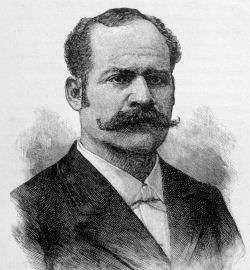 Coming to power in 1893, José Santos Zelaya sought to maximize the modernization of Nicaraguan society. General Zelaya was not as simple as other Latin American military dictators - he read a lot, admired the experience of the French Revolution, and most importantly - intended to significantly reduce the degree of political and economic dependence of Nicaragua from the United States. Since Zelaya maintained good relations with British and Japanese diplomats, he was convinced that with the help of the two powers he would succeed in pushing the Americans away from the actual control of Nicaragua. Zelaya was called the “liberal dictator” - he introduced universal suffrage (by the way, earlier than in the Russian Empire), universal compulsory primary education, allowed divorces, introduced the Labor Code. Zelaya dealt significant blows to church positions, but American corporations suffered the most — Zelaya tried to get them to pay taxes to the Nicaraguan government. Construction of railways began in the country, new schools were opened, a Nicaraguan steamboat company was founded, and a lake merchant fleet was built. For the country's armed forces, Zelaya’s rule was marked not only by the beginning of the creation of a professional army, but also by the opening of the Military Academy for the training of personnel officers. Zelaya invited Chilean, French and German officers as military instructors in Nicaragua, who were to set up the process of training Nicaraguan commanders. However, the lack of financial resources prevented the Nicaraguan government from implementing the conceived plan of military reform, and by 1909, the number of armed forces of the country was reached only by 500 people.
Coming to power in 1893, José Santos Zelaya sought to maximize the modernization of Nicaraguan society. General Zelaya was not as simple as other Latin American military dictators - he read a lot, admired the experience of the French Revolution, and most importantly - intended to significantly reduce the degree of political and economic dependence of Nicaragua from the United States. Since Zelaya maintained good relations with British and Japanese diplomats, he was convinced that with the help of the two powers he would succeed in pushing the Americans away from the actual control of Nicaragua. Zelaya was called the “liberal dictator” - he introduced universal suffrage (by the way, earlier than in the Russian Empire), universal compulsory primary education, allowed divorces, introduced the Labor Code. Zelaya dealt significant blows to church positions, but American corporations suffered the most — Zelaya tried to get them to pay taxes to the Nicaraguan government. Construction of railways began in the country, new schools were opened, a Nicaraguan steamboat company was founded, and a lake merchant fleet was built. For the country's armed forces, Zelaya’s rule was marked not only by the beginning of the creation of a professional army, but also by the opening of the Military Academy for the training of personnel officers. Zelaya invited Chilean, French and German officers as military instructors in Nicaragua, who were to set up the process of training Nicaraguan commanders. However, the lack of financial resources prevented the Nicaraguan government from implementing the conceived plan of military reform, and by 1909, the number of armed forces of the country was reached only by 500 people. President Zelaya tried to pursue an independent foreign policy, which ultimately led to his overthrow. First, Zelaya boycotted the United Fruit Company, which controlled 15% of the country's banana plantations. He decided to create the Bluefields-New Orleans shipping line to market tropical fruits, bypassing the American company. But finally, the United States “patience cup” overwhelmed the receipt of a loan from the UK - the main political and economic rival of the USA in the region. After receiving a loan, Zelaya turned to Japanese corporations with a proposal to build a new Nicaraguan channel. If this idea were successful, the monopoly of the Panama Canal would have been destroyed, and therefore, the political and economic positions of the United States, not only in Central America, but in the world as a whole, would have been dealt a heavy blow. The US government has decided to act in advance and destabilize Nicaragua. To this end, the American authorities began to support the Nicaraguan opposition, which had long sought to overthrow President Zelaya. October 10 1909, General Juan José Estrada, accused President Zelaya of embezzlement and corruption and revolted in Bluefields. Thus began the Coastal Revolution. Government forces under the command of General Salvador Toledo acted to suppress the rebels, but their advance was stopped by an explosion of military vehicles. Two American citizens were accused of sabotage; they were shot by the Nicaraguan military tribunal. So the fate of Zelaya was finally decided - the United States did not forgive the Nicaraguan president for the execution of its citizens. Under the pressure of circumstances, Zelaya 21 December 1909 of the year left the presidency of the country and soon left the country. His reign is still controversial: pro-American forces accuse Zelaya of all mortal sins, from corruption to racism, while leftists see Zelaya as a progressive ruler who wanted to turn Nicaragua into a prosperous state.
After the overthrow of Zelaya in 1909, the political situation in Nicaragua was seriously destabilized. The struggle for power between yesterday’s allies to confront Zelaya intensified. Officially using the pretext of "protecting the national interests of the United States," in 1912, units of the US Marine Corps were introduced into Nicaragua. The American occupation lasted, with a one-year break for 1925-1926, until 1933 - for twenty-one years the country was under the actual control of the American military command. At the same time, the United States, in an effort to restore order and strengthen the puppet regime, initially took steps to strengthen the Nicaraguan army. The maximum number of armed forces of Nicaragua, in accordance with the Convention on the Reduction of Arms, signed in 1923, amounted to 2,5 thousand soldiers and officers. It was allowed to use foreign military advisers to train the Nicaraguan army, which the Americans also sought to take advantage of, putting control of the Nicaraguan army's combat training system. On February 17, 1925, the US Department of State submitted to the Government of Nicaragua a detailed plan for the modernization of the Nicaraguan Armed Forces and their transformation into the National Guard. According to the US military, the Nicaraguan National Guard was supposed to combine the functions of the army, fleet and national police and become a single power structure of the country. The Nicaraguan Congress adopted the proposed plan in May 1925, and on June 10, 1925, US Army Major Calvin Cartren began training the first units of the Nicaraguan National Guard.
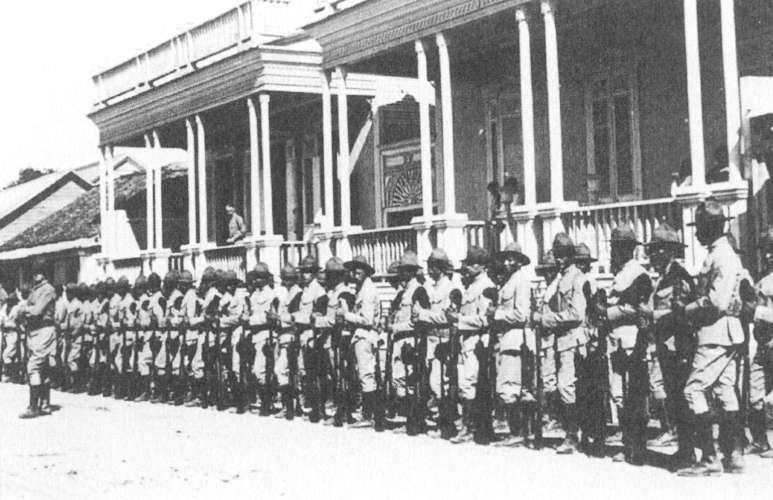
The National Guard of Nicaragua - the stronghold of the dictator Somoza
Between 1925 and 1979, the National Guard served as the military of Nicaragua. Her first combat operation took place on 19 in May of 1926, when the units of the National Guard, prepared by American military instructors, managed to defeat the troops of the Nicaraguan Liberal Party in the battle of Rama. 22 December 1927, the Nicaraguan Foreign Minister and the United States Chargé d'Affaires signed an agreement according to which the strength of the National Guard of Nicaragua was established in the 93 officer and 1136 national guards. The officers in the National Guard of Nicaragua were occupied mainly by American citizens - officers and sergeants of US Marine Corps units deployed in Nicaragua. In accordance with the agreement, all military property located on the territory of the country was transferred to the jurisdiction of the National Guard of the country. 19 February 1928 The creation of the National Guard was legitimized by the relevant law passed by the National Congress of Nicaragua. Naturally, the United States of America was most active in organizing, training and arming the National Guard of Nicaragua. In fact, the National Guard was a military-police unit acting in the interests of the pro-American Nicaraguan elite. Soldiers and officers of the National Guard were dressed in American uniform and armed with American weapons, their training was carried out by military instructors from the US Marine Corps. Gradually, the strength of the National Guard of Nicaragua was increased to 3000 soldiers and officers. The command staff began to prepare in the "School of the Americas", as well as in military schools in Brazil. During the 1930-x - 1970-x. The National Guard played a crucial role in the political life of Nicaragua. It was the National Guardsmen who directly suppressed the uprising under the leadership of the national hero Augusto Sandino.
9 June 1936 The power in Nicaragua as a result of a military coup came Anastasio Garcia Somoza (1896-1956), who served as commander of the National Guard.
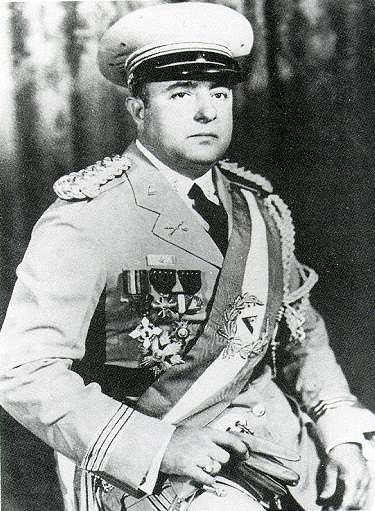 In fact, Somosa was not a professional military man - all his youth he was engaged in various dark affairs, being a hereditary felon. The entry of Somosa, a man of extremely dubious origin, into the Nicaraguan political elite happened by chance. Having been in America, where he also engaged in criminal activities, Somosa returned to his homeland and was able to marry favorably. So he received the post of political head of the city of Leon. Then, having met with General Moncada, Somosa became responsible for his interaction with the American command, enlisted the support of the Americans and was appointed to the post of commander of the National Guard of Nicaragua. A person with a criminal past and without education received a general rank. After a short time, Somosa seized power. So in the country the dictatorial regime of the Somos clan was established, which existed until the end of the 1970s. Despite the fact that Somosa was an openly corrupt politician, closely associated with crime and carrying out political repression against opponents, he enjoyed the full support of the United States of America. This was facilitated by the fanatical anti-communism of Anastasio Garcia Somosa, who by all means tried to suppress the communist movement in Central America, and before the outbreak of World War II he did not hide his sympathies for German Nazism and Italian fascism. During the reign of Anastasio Somosa and his sons Luis Anastasio Somosa (1922-1967, reigned in 1956-1963) and Anastasio Somosa Debeile (1925-1980, reigned 1963-1979) Nicaragua continued military-political cooperation with the United States. In 1938, the history of the Nicaraguan Air Force, created as part of the National Guard, began. In 1942, a small number of aircraft were purchased in the United States and aircraft instructors were hired, and by 1945 the Air Force of the National Guard of Nicaragua had about 20 aircraft. Thanks to American assistance, Nicaragua for some time possessed the strongest air forces in Central America. At the same time, the Air Force of the National Guard, where the most educated officers served, became the core of sedition in the country's armed forces. In 1957, it was the officers aviation prepared a conspiracy against the rule of the sorrowful country of the name of Somos.
In fact, Somosa was not a professional military man - all his youth he was engaged in various dark affairs, being a hereditary felon. The entry of Somosa, a man of extremely dubious origin, into the Nicaraguan political elite happened by chance. Having been in America, where he also engaged in criminal activities, Somosa returned to his homeland and was able to marry favorably. So he received the post of political head of the city of Leon. Then, having met with General Moncada, Somosa became responsible for his interaction with the American command, enlisted the support of the Americans and was appointed to the post of commander of the National Guard of Nicaragua. A person with a criminal past and without education received a general rank. After a short time, Somosa seized power. So in the country the dictatorial regime of the Somos clan was established, which existed until the end of the 1970s. Despite the fact that Somosa was an openly corrupt politician, closely associated with crime and carrying out political repression against opponents, he enjoyed the full support of the United States of America. This was facilitated by the fanatical anti-communism of Anastasio Garcia Somosa, who by all means tried to suppress the communist movement in Central America, and before the outbreak of World War II he did not hide his sympathies for German Nazism and Italian fascism. During the reign of Anastasio Somosa and his sons Luis Anastasio Somosa (1922-1967, reigned in 1956-1963) and Anastasio Somosa Debeile (1925-1980, reigned 1963-1979) Nicaragua continued military-political cooperation with the United States. In 1938, the history of the Nicaraguan Air Force, created as part of the National Guard, began. In 1942, a small number of aircraft were purchased in the United States and aircraft instructors were hired, and by 1945 the Air Force of the National Guard of Nicaragua had about 20 aircraft. Thanks to American assistance, Nicaragua for some time possessed the strongest air forces in Central America. At the same time, the Air Force of the National Guard, where the most educated officers served, became the core of sedition in the country's armed forces. In 1957, it was the officers aviation prepared a conspiracy against the rule of the sorrowful country of the name of Somos. Back in the years of the Second World War, supplies of American weapons for the National Guard of Nicaragua were started under the Lend-Lease program. American aid has increased since the signing of the Inter-American Treaty of Mutual Assistance, concluded at 1947 in Rio de Janeiro. In 1954, a US-Nicaraguan agreement on military assistance was concluded, in accordance with which the US provided Nicaragua with weapons, military equipment and equipment. For the organization of combat training of the National Guard of Nicaragua, 54 officer and 700 sergeants and soldiers of the American army arrived in the country. Given the anti-communist stance of Somoza, the American government considered Nicaragua at that time as one of the main bastions of opposition to Soviet influence in Central America. Military assistance intensified after the events in Cuba. The Cuban revolution contributed to the revision of the American military-political program in Latin America. The main emphasis of the American military instructors began to be on the anti-partisan training of army and police units in Latin American countries. The National Guard of Nicaragua, which was to enter into a long armed struggle against the Sandinista National Liberation Front (FSLN), a radical left-wing rebel organization, was no exception. It should be noted here that the Somoza mode by the middle of the 1950-ies. managed to pretty much get bored with most of the Nicaraguan intelligentsia. In 1956, the young poet Rigoberto Lopez Perez managed to get to the ball in the city of Leon, where General Somoza was present, and shoot the Nicaraguan dictator seven times. Peres' bodyguard was shot dead by Somoza’s bodyguards, but the seventh bullet fired by the poet and caught in the groin of the dictator turned out to be fatal. Although Somoza was evacuated to the Panama Canal zone by helicopter of the US Navy, where the best American surgeons flew, including President Eisenhower's personal doctor, a few days later the 60-year-old dictator died. After the assassination of Somoza, the American command and intelligence services began to invest even more in manpower and resources in equipping the National Guard of Nicaragua.
In December, 1963 of Nicaragua became a member of the Central American Defense Council, which played an important role in the US military-political strategy in the region. As a member of the bloc, Nicaragua in 1965 took part in the occupation of the Dominican Republic by American troops. In parallel, the country's National Guard regularly participated in the suppression of workers and peasant uprisings in Nicaraguan cities. Protests without shame of conscience were shot from a firearm. As the Sandinista National Liberation Front intensified, the National Guard was reinforced.
In 1972, the strength of the National Guard of Nicaragua was 6,5 thousands of soldiers and officers. By 1979, it almost doubled and consisted of 12 thousands of soldiers and officers. Since an embargo on direct arms supplies to the Somoza regime from the United States of America was imposed on 1978, Israel became the main supplier of the Nicaraguan government. In addition, the organizational and consulting assistance of the National Guard of Nicaragua has stepped up the command of the Argentine armed forces. By 1979, the number of National Guard of Nicaragua was about 12 thousand people. The National Guard consisted of army, air, naval and police units. Army component of the National Guard of Nicaragua; 1 Battalion; Armed with machine guns and anti-aircraft artillery installations, 1 separate security companies (in fact, ordinary infantry companies that performed military-police functions and stationed in the administrative centers of all departments ntov countries). The Air Force National Guard of Nicaragua included the 1 Combat Aviation Squadron, the 1 Helicopter Squadron, the 1 Transport Squadron, and the 1 Training Squadron. The National Guard naval forces, which in fact were the country's coast guard, were deployed at the naval bases in Corinto (Nicaragua's Pacific Coast) and Puerto Cabezas (Atlantic Coast). In addition, coast guard posts operated at San Juan del Sur and Bluefields. Also, the National Guard included commando units created in 12 and better known as the black berets. In 105, the National Police of the National Guard of Nicaragua was created, in addition there was a Special Anti-Terrorism Brigade - a special-purpose motorized police unit. Officers for the National Guard of the country trained in several military schools. The main educational institution of the armed forces of the country remained the Military Academy of Nicaragua, opened in 1. Army officers were trained in the National Infantry School, opened in 16 and headed by the son of the President of the country 1 year-old Colonel Anastasio Somoza Portocarrero (in 1-1). already at dusk the regime of the clan Somoza, Colonel Anastasio Somoza Portocarrero served as commander of the National Guard of Nicaragua, he later emigrated to the United States, where he currently lives). Air Force officers were trained at the Air Force School of Nicaragua, and the Police Academy of the National Guard was created to train police officers.
Sandinista - at the origins of the modern army of Nicaragua
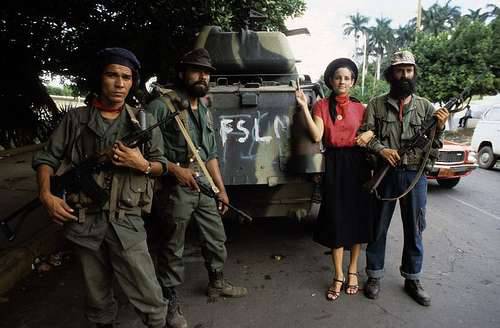 The Sandinista National Liberation Front remained the main military opponent of the Somoza regime. The history of this left-wing patriotic organization began on July 23 1961, when in exile, in the Honduran capital Tegucigalpa, a group of radical left-wing students created a revolutionary front. Its predecessor and the foundation was the organization "Democratic Youth of Nicaragua", created in March 1959 by the revolutionaries Carlos Fonseca and Silvio Mayorga. Initially, the front was simply called the Front for National Liberation, and from 22 in July of 1962 it became known as the Sandinista - as a sign of the organization’s commitment to the ideological and practical legacy of Augusto Sandino. After the death of Carlos Fonseca in 1976, three factions were distinguished in the FSLN. The faction “Prolonged Popular War” united supporters of combined actions of urban and rural organizations. The urban cells were supposed to recruit supporters among Nicaraguan students and provide funding for the organization, and the rural ones would create base camps in the highlands and launch a guerrilla war against the government. The “Proletarian trend” faction, on the contrary, adhered to the idea of creating a proletarian party and unleashing a partisan war in the cities - by the forces of the urban workers. The Third Force faction advocated a general popular uprising involving all opposition forces of the Somoza regime. 7 March 1979 in Havana, the United National Guide of the Sandinista National Liberation Front was formed as a part of 9 people. Among them was Daniel Ortega - the current president of Nicaragua, and then the 34-year-old professional revolutionary, behind whom were decades of guerrilla warfare and leadership of the military partisan formations of the FSLN. The SFNO forces consisted of three main components: 1) mobile partisan units of the Sandinistas, 2) units of the “people's militia” staffed by peasants, 3) non-military mass organizations, civil protection committees and workers protection committees. The most combat-ready part of the FSLN was the “La Liebre” (“Hare”) detachment, which had the status of a special purpose strike group and was directly subordinate to the main military command of the FSLN. The detachment was armed with automatic weapons, bazookas and even mortars. The commander of the squadron was Walter Ferreti, nicknamed “Tshombe”, and his deputy was Carlos Salgado.
The Sandinista National Liberation Front remained the main military opponent of the Somoza regime. The history of this left-wing patriotic organization began on July 23 1961, when in exile, in the Honduran capital Tegucigalpa, a group of radical left-wing students created a revolutionary front. Its predecessor and the foundation was the organization "Democratic Youth of Nicaragua", created in March 1959 by the revolutionaries Carlos Fonseca and Silvio Mayorga. Initially, the front was simply called the Front for National Liberation, and from 22 in July of 1962 it became known as the Sandinista - as a sign of the organization’s commitment to the ideological and practical legacy of Augusto Sandino. After the death of Carlos Fonseca in 1976, three factions were distinguished in the FSLN. The faction “Prolonged Popular War” united supporters of combined actions of urban and rural organizations. The urban cells were supposed to recruit supporters among Nicaraguan students and provide funding for the organization, and the rural ones would create base camps in the highlands and launch a guerrilla war against the government. The “Proletarian trend” faction, on the contrary, adhered to the idea of creating a proletarian party and unleashing a partisan war in the cities - by the forces of the urban workers. The Third Force faction advocated a general popular uprising involving all opposition forces of the Somoza regime. 7 March 1979 in Havana, the United National Guide of the Sandinista National Liberation Front was formed as a part of 9 people. Among them was Daniel Ortega - the current president of Nicaragua, and then the 34-year-old professional revolutionary, behind whom were decades of guerrilla warfare and leadership of the military partisan formations of the FSLN. The SFNO forces consisted of three main components: 1) mobile partisan units of the Sandinistas, 2) units of the “people's militia” staffed by peasants, 3) non-military mass organizations, civil protection committees and workers protection committees. The most combat-ready part of the FSLN was the “La Liebre” (“Hare”) detachment, which had the status of a special purpose strike group and was directly subordinate to the main military command of the FSLN. The detachment was armed with automatic weapons, bazookas and even mortars. The commander of the squadron was Walter Ferreti, nicknamed “Tshombe”, and his deputy was Carlos Salgado. At the end of 1978, the combat units of the Sandinista National Liberation Front intensified their activities in the whole of Nicaragua, which prompted the country's leadership to declare a state of siege. But these measures could no longer save the Somoza regime. 29 in May 1979. The operation of the SFNO “Final” began, which ended with the complete collapse of the Somoza regime. 17 July 1979. President Somoza and other members of his family left Nicaragua, and 19 July 1979 power in the country officially passed into the hands of the Sandinista. The victory of the Sandinista revolution meant the onset of an era of transformational change in the life of Nicaragua. This event could not but influence the fate of the country's armed forces. The National Guard of Nicaragua was dissolved. Instead, in July 1979, the Sandinista Popular Army of Nicaragua was created, which was based on yesterday’s partisans. On the eve of the seizure of power in the country, the FSLN numbered 15 thousand people, including 2 thousand fighters served in detachments formed according to the type of ordinary land units, 3 thousand more served in partisan detachments and 10 thousand people were peasant militia - "Militia". After coming to power, the Sandinista carried out a partial demobilization of the partisans. In 1980, universal military service was introduced for persons older than 18 years (in 1990, it was abolished). A system of military ranks was introduced in the Sandinista National Army, and a campaign was launched to eliminate illiteracy among military personnel. Considering that the overwhelming majority of soldiers were immigrants from peasant families in the Nicaraguan province, the elimination of illiteracy seemed to the Sandinista army not less important than the establishment of a combat training process. The official decree on the creation of the Sandinista people's army was adopted on 22 in August 1979. Despite the defeat of the Somoz regime, the Sandinistas had to wage an armed struggle against the Contras - detachments of the opponents of the revolution, who made constant attempts to invade Nicaragua from the territory of neighboring Honduras. Many former national guardsmen of the Somoza regime, peasants dissatisfied with the policies of the Sandinista government, liberals, representatives of ultra-leftist groups, who also opposed the Sandinista national liberation front, fought as part of the contras. Among the Contras there were many representatives of the Miskito Indians who inhabit the so-called. Mosquito Coast and traditionally opposed to the central Nicaraguan authorities. In many detachments of the contras, there were also present officers of the American CIA, whose task was to coordinate the actions of counterrevolutionaries and their training.
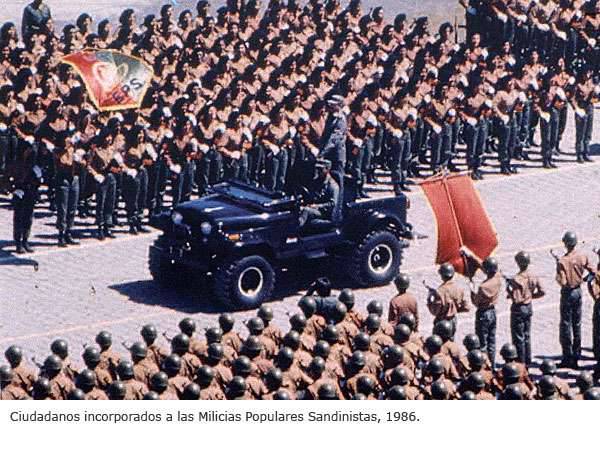
Due to the difficult military-political situation in the country, the number of Sandinista people's army was significantly increased. Thus, in 1983, 7 thousand people served in the ranks of the Sandinista Popular Army. A few thousand more people served in the formations of the people's militia staffed by armed peasants of the border provinces. After the adoption of the law “On Patriotic Military Service” (1983), it was established that the military training course for 45 days is mandatory for all Nicaraguans aged from 18 to 25 years. The program of the course included physical training, training in shooting from firearms, throwing grenades, elementary action skills in infantry units, masking and digging. In addition to the contras, the invasion of the US army and US allies into Grenada was a major cause for concern for the Sandinista leadership. After this, the Sandinista Popular Army was brought to full alert, and its numbers increased even more. By 1985, in the armed forces of Nicaragua, about 40 served thousands of people, 20 more thousand people served in the Sandinista people's militia.
The command of the Sandinista people's army was carried out by the president of the country through the minister of defense and the chief of the general staff. In 1980-s. the post of Minister of Defense of the country was occupied by Daniel Ortega’s brother Umberto Ortega. The entire territory of Nicaragua was divided into seven military districts. Several infantry brigades and separate infantry battalions, as well as artillery, antiaircraft-artillery divisions or batteries, mechanized and reconnaissance units were deployed on the territory of each of the military regions. The country's armed forces included the ground forces, the air force, the naval forces and the border troops. To combat the Contras, light infantry battalions were formed. In 1983, they numbered 10, in 1987, the number of battalions was brought to 12, and later - 13. At the end of 1985, the formation of reserve battalions began. In addition, Sandinista people's militia operated in the country. It was a self-defense detachment, staffed by peasants and created during the civil war. The militia was armed with small arms. It was the people’s militia that included light infantry battalions armed with small arms and specially trained for waging war in the jungle and identifying insurgents, the contras, during the war against the Contras. So yesterday's partisans and revolutionaries for quite a short time were forced to form their own counter-partisan units. With regard to military training and combat training of the Nicaraguan army, after the Sandinista revolution, new allies, Cuba and the Soviet Union, began to provide major assistance to Nicaragua. And if the USSR mainly supplied weapons and military equipment, Cuba was engaged in the direct training of Nicaraguan military personnel.
The gradual normalization of relations between the Soviet Union and the United States after the start of the “perestroika” policy affected the military-political situation in Nicaragua. In 1988, the Soviet Union stopped providing military assistance to this Central American country. In 1989, Nicaraguan President Daniel Ortega suspended youth military service. However, subsequent events in Central America again forced the Sandinista leadership to bring the military units to combat readiness - the reason for this was the intervention of the American army in Panama in December 1989, which ended with the seizure of Panamanian president General Manuel Noriega and his delivery to the USA. With 1990, a gradual reduction in the number and reform of the organizational structure of the Sandinista Popular Army began. The number of armed forces of the country was reduced from 61 thousand to 41 thousand soldiers. In December 1990 was officially canceled the call of Nicaraguans for military service. The cessation of armed confrontation from the Contras contributed to the further reduction of the armed forces of Nicaragua, their reorientation to the service of guarding state borders, fighting crime, helping people in eliminating the consequences of natural disasters and emergency situations. In 1995, the Sandinista Popular Army was renamed the National Army of Nicaragua. The number of armed forces of the country by this time decreased to 15,3 thousand people. In 2003, the United States offered Nicaragua to destroy all MANPADS received in the 1980s. from the Soviet Union.
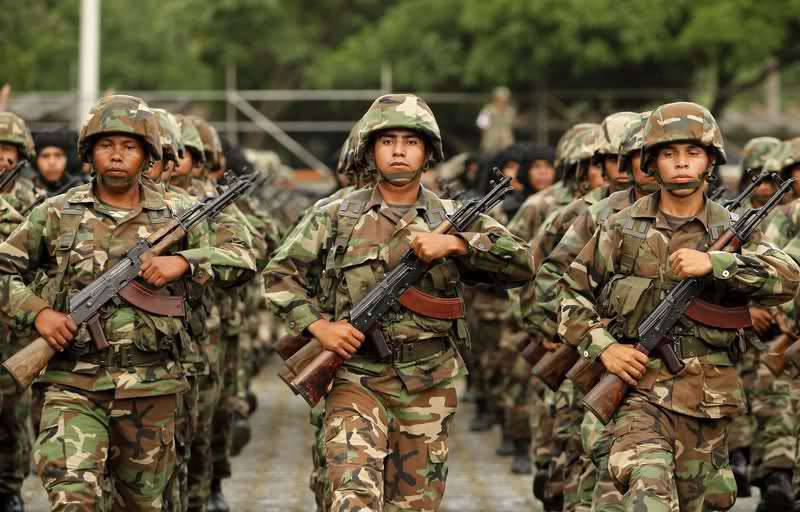
National Army of Nicaragua in the modern period
Currently, the armed forces of Nicaragua has about 12 thousand military personnel and consists of ground forces, air forces and naval forces. The ground forces, numbering 10 soldiers and officers, include: 000 regional commands, 6 infantry detachments, 2 light mechanized brigade, 1 special forces brigade, 1 military transport regiment, 1 engineering battalion. In the arsenal of the ground forces are 1 tank T-55, 10 tanks PT-76, 20 BRDM-2, 166 armored personnel carriers, 800 artillery field artillery guns, 371 anti-tank guns, 607 mortars. The Air Force of Nicaragua is serving about 1200 soldiers and officers. The Air Force includes 15 combat and 16 transport helicopters, 4 An-26 aircraft, 1 An-2 aircraft, 1 T-41 D aircraft and 1 Cessna 404 aircraft.
In the Nicaraguan Navy, there are 800 people, the 7 patrol and 16 small boats are in service. In June, 2011, as part of the Nicaraguan Navy, began the formation of a special battalion of soldiers and officers in 300, the main task of which is to combat smuggling and drug trafficking in the territorial waters of Nicaragua. In addition to the armed forces, the Nicaraguan National Police includes the Nicaraguan militia. Often she speaks together with the army units. The history of modern Nicaraguan police is rooted in the combat path of the Sandinista militia. Currently, the country's national police has become less militarized than before, when it represented a de facto equivalent of gendarmerie or internal troops.
Currently, the National Army of Nicaragua is commanded by the president of the country through the minister of defense and the chief of the general staff. The country's armed forces are recruited by recruiting volunteers for military service under the contract. The following military ranks are established in the armed forces of Nicaragua: 1) Army General, 2) Major General, 3) Brigadier General (Rear Admiral), 4) Colonel (Fleet Captain), 5) Lieutenant Colonel (Frigate Captain), 6) Major ( Corvette Captain), 7) Captain (Fleet Lieutenant), 8) First Lieutenant (Frigate Lieutenant), 9) Lieutenant (Corvette Lieutenant), 10) First Sergeant, 11) Second Sergeant, 12) Third Sergeant, 13) First Soldier (First sailor), 14) second soldier (second sailor), 15) soldier (sailor). As you can see, the military ranks of Nicaragua in general resemble the army and navy hierarchy of the neighboring Central American states - Guatemala and El Salvador, whose armies we described in the previous article. The training of the officer corps of the Nicaraguan army is carried out in the Military Academy of Nicaragua - the oldest military educational institution in the country. Officers for the national police are trained at the Walter Mendoza Martinez Police Academy.
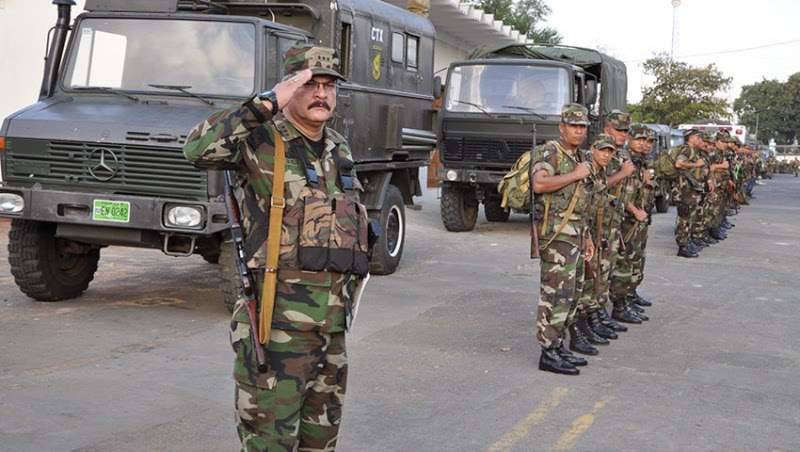
After the return of Daniel Ortega to power in the country, Russia once again became one of the most important military and political partners of Nicaragua. Only in 2011 were 5 engineering vehicles delivered from the Russian Federation to Nicaragua. By 2013, an ammunition disposal plant was built on which industrial explosives are obtained from old shells. It is noteworthy that the Training Center of the Ground Forces of Nicaragua, opened in the same April of 2013, received the name of the outstanding Soviet commander Marshal of the Soviet Union Georgy Konstantinovich Zhukov. In August 2014, the Nicaraguan army received 23-mm anti-aircraft artillery units ZU-23-2, a training complex for Mi-17В-5 helicopters and parachutes, for the sum of 15 million dollars. In 2015, with Russian help, the Humanitarian Rescue Unit of the Nicaraguan Army was equipped, performing noble and important tasks to rescue people during natural disasters and eliminate the consequences of emergency situations in the country. Currently, Nicaragua is one of the most important military-strategic partners of the Russian Federation in the New World. In recent years, the pace of military cooperation between the two countries has increased. So, at the beginning of January 2015, warships of the Russian Navy were able to stay in the territorial waters of Nicaragua, and Russian military aircraft - in the airspace of the country. The military-political cooperation of Russia and Nicaragua is very alarming for the United States of America. The reasons for concern are well founded. The fact is that there is a construction project for the Nicaraguan Canal with the participation of Nicaragua, Russia and China. If this happens, the long-standing goal of the Nicaraguan patriots will be realized, for which President Jose Santos Zelaya was overthrown in due time. However, the United States is likely to try to make every effort to thwart plans for the construction of the Nicaraguan channel. The scenarios of mass riots, the “Orange Revolution” in Nicaragua are not excluded, and in this context military cooperation with Russia and the possible assistance that Russia can provide to a distant Latin American country takes on special significance for the country. It should be noted that with the return to power in Nicaragua, the Sandinistas in the country once again intensified the "contras" detachments, which switched to armed actions against the Nicaraguan government. In fact, supported by the American special services, the modern “contras” still insist on the resignation of Daniel Ortega and the displacement of the Sandinistas from power in the country. To all appearances, the American special services are specially “training” the new generation of counter-revolutionary Nicaraguan rebels to destabilize the political situation in the country. The US leadership is well aware that the very likelihood of successful completion of the construction of the Nicaraguan Canal is related to whether Daniel Ortega and, in general, the Sandinistas, who are in patriotic and anti-imperialistic positions, will remain in power.
- P P 'SЊSЏ RџRѕR "RѕRЅSЃRєRёR№
- http://nextioneer.blogspot.ru/, http://www.ejercito.mil.ni/, http://www.stylepinner.com/
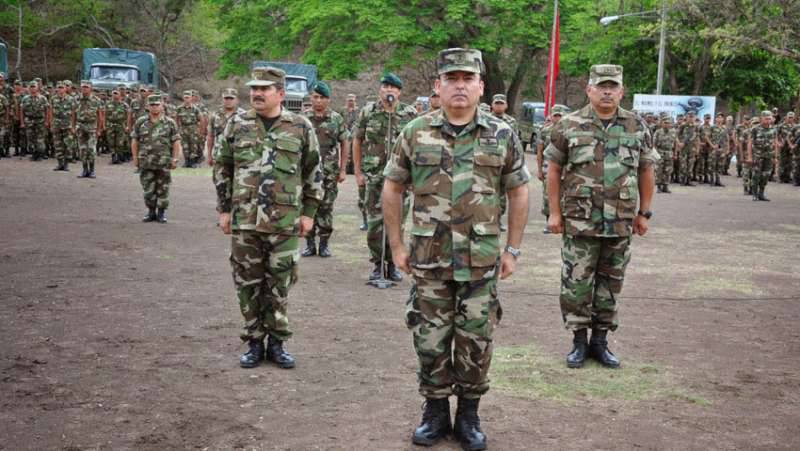
Information